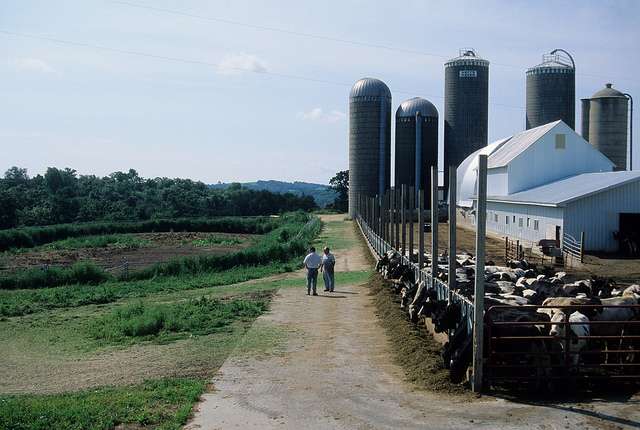America’s Dairyland is Struggling
Despite a proud history of dairy production, the industry is in decline.
I started helping my mom and dad with chores in 1960 when I was eight years old. I fed silage to the cows and it gave me some responsibility but most importantly, it gave my mom time to play games and do homework with my brothers and sisters.
I loved being with the cows and listening to country music on the radio. Especially important was spending time with my parents while milking and doing other chores.
I am proud to be a dairy farmer’s son, grandson and great grandson. The dairy farm is where I formed my values, learned the importance of hard work, and gained my perspective on life.
I know my childhood experiences in the barn with my family, going to school in a small town, and being active in the Future Farmers of America are not unique. It is why many dairy farmers do what they do: to give their children an opportunity to grow up as they did on the farm.
Wisconsin did not start out as America’s Dairyland, but dairy farming quickly took root as New Yorkers settled in Southern Wisconsin in the 1840s and 1850s. Most of the early dairy generations made cheese rather than butter because it kept longer in the days before refrigeration.
Charles Rockwell was one of the earliest cheese makers in Wisconsin. In 1837, he produced cheese at Koshkonong, near Fort Atkinson, in Jefferson County.
Scientific research at the University of Wisconsin helped propel our dairy industry. The university experimented with new dairying methods and promoted all of those silos you see as you drive through the Wisconsin countryside.
Stephen Babcock’s butter fat test for milk allowed high quality butter and cheese to be manufactured consistently. The UW’s College of Agriculture pioneered tests for bacteria that led to practical methods of milk pasteurization.
In the 1880’s the university became offering “short courses” to educate farmers on the benefits of dairying. By 1915, Wisconsin had become the leading dairy state in the nation, produced more butter and cheese than any other state.
June, as National Dairy Month, started out as National Milk Month in 1937 as a way to promote drinking milk. Highly nutritious, tasty and versatile, milk is often characterized as “nature’s most nearly perfect food.” I drink a glass or two every day.
Wisconsin’s dairy industry contributes $45.6 billion to Wisconsin’s economy each year. Our feed mills, dairy equipment, manufacturers, technicians, veterinarians, construction companies, genetics companies, milk haulers, dairy plants and dairy software companies create a wave of economic impact that rolls across our entire state.
Wisconsin is still number one in cheese production. Our 126 cheese plants produce 2 billion pounds of cheese annually, 26 percent of the nation’s total led by Muenster, Brick, Cheddar and Mozzarella. In 2019, we led the nation in production of specialty cheeses.
This is what Wisconsin is known for. When I travel and say I’m from Wisconsin, cheese always comes up in the conversation.
Wisconsin lost 818 dairies in 2019, our largest decline in state history. We have only about 7,200 dairy farms left. In 1960 when I first began feeding the cows, we had 100,000 dairy farms. Wisconsin’s dairy industry is struggling. Experts in the UW-System and private industry are working hard to find new markets.
As the dairy economy evolves, I encourage everyone to check out the huge array of agricultural products our state offers. Beyond cheese and milk, small-scale Wisconsin farmers grow an abundance of vegetables, fruits and grains that are available for sale at stores and farmers’ markets near you. Eat healthy, eat local.
State Rep. Don Vruwink represents parts of Rock, Walworth, Jefferson, and Dane counties, which include the communities of Whitewater, Milton, Edgerton, Footville, part of the Village of Oregon, and 15 surrounding townships. H
Op-Ed
-
Unlocking Milwaukee’s Potential Through Smart Zoning Reform
 Jul 5th, 2024 by Ariam Kesete
Jul 5th, 2024 by Ariam Kesete
-
We Energies’ Natural Gas Plans Are A Mistake
 Jun 28th, 2024 by John Imes
Jun 28th, 2024 by John Imes
-
Milwaukee Needs New Kind of School Board
 Jun 26th, 2024 by Jordan Morales
Jun 26th, 2024 by Jordan Morales






















